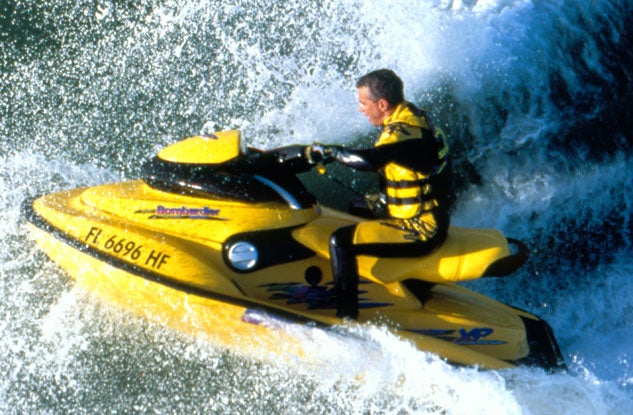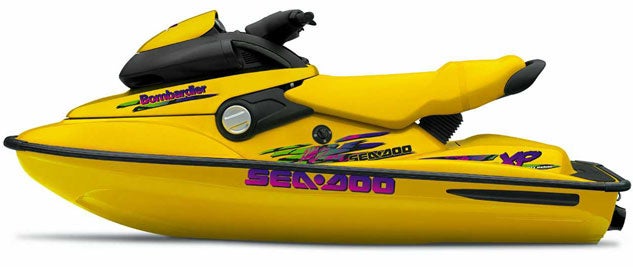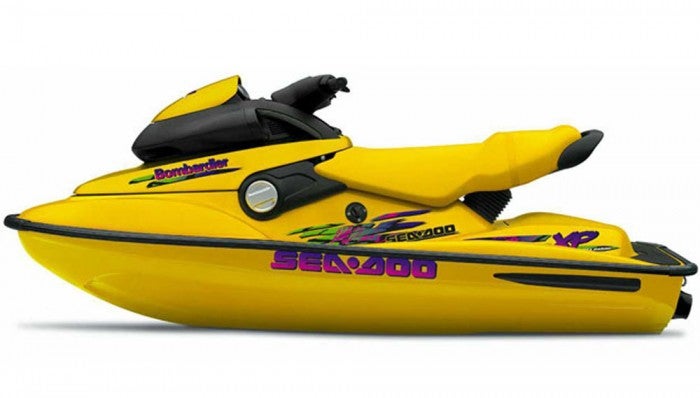Remembering the Sea-Doo XP
Fourth generation XP brought big innovation to runabouts
Last month, we revisited one of the most iconic personal watercraft of all time – the Yamaha WaveBlaster. This time around we’re taking a look back at a machine that was arguably influenced by the WaveBlaster and went on to establish a reputation of its own – the Sea-Doo XP.
But which one? Good question. The XP name has shared by several craft throughout the years. The first three iterations (1991-1996) brought musclecraft performance to the Sea-Doo runabout line, but it’s the fourth generation (1997-2004) that truly innovated.
This second coming of the XP sported a futuristic design that, as the story goes, took cues from a dolphin. Above, it was all curvy and high-tech looking. Halfway down, the hull sported an hourglass profile designed to channel water efficiently down the hullsides, preventing it from catching on the chines or bond rail. Below, concave sections at the bow acted to suck the hull down into the water to produce exceptionally tight turns. Even the stern featured a twist, with concave “teardrops” that kept the tail end of the craft anchored and preventing any tendency to slide out. Gone was the question about where to place your weight to get the best results that plagued early generations of PWC. The XP allowed the driver to intuitively lean into the turn, mimicking the carving of a slalom water skier.

And then there was the seat. Like the HX model attempted before it, the XP seat offered a suspension. Hinged at the forward end with a spring behind, it took a little of the beating out of waves, but worked its real magic by compressing into tight turns, lowering the rider’s center of gravity.
Power? The original 782cc, two-stroke Rotax offered 110 horsepower, and the engine was canted in the engine compartment to lower the boat’s center of gravity. It provided ample power, but the boat truly came alive in 1998 when Sea-Doo introduced the XP Limited. It featured a 951cc Rotax with reed-style intake valves and Sea-Doo’s RAVE exhaust valves. This engine, with 130 horsepower, provided all a rider needed to push the boat to its limits – and a top speed of 60 mph. One more change came in 2003 with the inclusion of Orbital direct injection, a nod to coming emissions standards.

Like the WaveBlaster, the XP was really a solo machine. Sure, you could take a single passenger, but it wasn’t ideal. The boat also favored a shorter, rather than taller rider. The craft also had little storage, and like a standup model, required a certain degree of athleticism to balance and stay in control. All challenges that probably led to the craft’s demise as the wider, longer, more stable runabout body style began to take firm command of the market. But for sheer fun factor, in skilled hands it was hard to beat. Carving up morning glass, or launching off ocean waves, the Sea-Doo XP offered a level of fun that’s missing in today’s market.
We remember it fondly.
Get PersonalWatercraft.com in your Inbox!
Like PersonalWatercraft.com on Facebook
Related Stories
Comments
Most Popular

2025 Yamaha JetBlaster PRO 2-Up Review

Remembering the Sea-Doo XP

2024 Kawasaki Jet Ski STX 160X Review

Whatever Happened to the Wetbike?

2025 Yamaha JetBlaster Review












 Your Privacy Choices
Your Privacy Choices